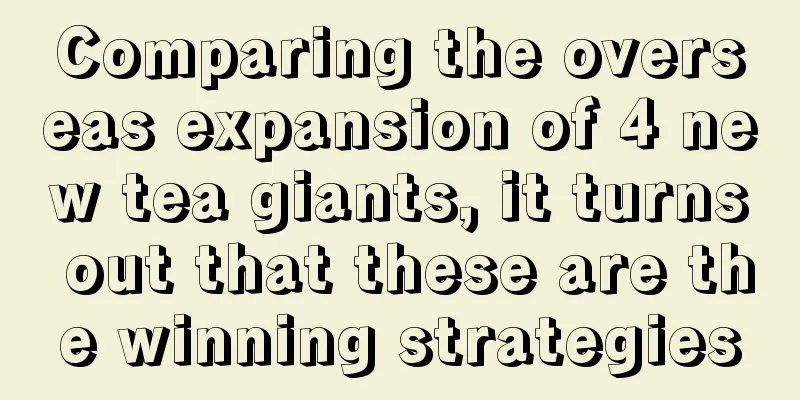As a manager, how to set the right goals for your business or product

I have come into contact with quite a few corporate clients, some of which are large in scale and some of which have diverse businesses. Logically, I should help solve very difficult problems, but in reality, I am not. Before I do anything, I will solve the problem of "goals" first. Most managers probably don't think that they are bad at setting and breaking down goals, because it seems like it doesn't have much value, it's just breaking down numbers. The problem is: Is the indicator selection correct? Is there a logical relationship between the company's goals and employees' goals? Is the goal to promote team collaboration or division? Do employees agree with it? wait. Therefore, there are problems with goal setting in most companies: unclear, opaque, and unreasonable. So what is a good goal? Here are a few key points: 1. Goals are divided into direct and indirectDirect goals are achievable, that is, indicators that can be influenced through our specific path measures. Indirect goals are often North Star goals, or comprehensive goals that are out of reach. For example, the number of new users is a direct goal and can be achieved, while DAU is an indirect goal and is generally unattainable unless the product is very small. 2. The execution side should look at indirect goalsThe overall goal of the enterprise is indirect, which is reasonable. When it comes to each business department or core project, the focus is on indirect indicators, because this is the only way to guide business direction, measure results, and most importantly, promote overall goals. I asked several bosses what the goal was, and they just gave me this big number. I said this is wrong. This big number will not change much in the short term, and there is nothing to analyze. It cannot guide you in making decisions or perceive changes in the business. Just leave the big numbers there and look at the trend over a longer period of time. Don't get impatient when you see short-term fluctuations and ask the team to do this and that. Look at the problem from a systemic perspective. 3. The boss’s goal is a combination of multiple direct indicatorsContinuing from what was said above, the boss needs to look at problems from a systems perspective. The core is to realize that the entire company or the entire business line is a complex system composed of multiple roles or factors, which are interconnected and influence each other, and one move can affect the whole body. The most important thing is that the phenomenon you see may not be the problem itself, and it may not be necessary to locate and solve it. The phenomenon is only one aspect and has a lag. As a boss, what indicators should you look at? Is it really just the end result? Of course not. It is true that the boss pays attention to core indicators, but this is not enough. Because the core indicators of a company or business are often indirect. As mentioned above, what really connects daily work is direct indicators. Moreover, it is a group of direct indicators. The reason why it is a set of indicators is, first of all, because business is multifaceted. From the company's perspective, we certainly hope to develop in an all-round way without any shortcomings or lamenesses. In addition, a single indicator cannot describe the quality of a business, and multiple indicators are needed to constrain each other. For example, the goals of a content platform include supply, consumption, monetization, and brand influence. This is a combination of indicators that constrain each other and must be viewed simultaneously. Of course you can have priorities, but you still have to look at them all. For example, the goals of e-commerce platforms include GMV, average order value, consumption frequency, consumer users (new customers, repeat customers), product category supply, etc., which is the same as above. Let me give you two examples. We hope that teenagers grow up healthily, and we should be happy if they grow to 185cm in height. But if the child weighs 120kg at the same time, we should worry about obesity. It is not enough to just look at height. If a newly opened milk tea shop only pursues the number of orders, it can promote it on Douyin, which will bring in a large number of orders in a short period of time and look very lively. But without profits and repeat purchases, this is a losing business. Generally speaking, goal setting is closely related to business logic, organizational relationships, and management capabilities, which will not be elaborated in this article. As long as you achieve the above three points, at least the goal at the boss level can be achieved and there won’t be any major problems. Author: Han Xu Source: WeChat public account "Operation Dog Work Diary (ID: yunyingriji)" |
<<: Graduation season is here, how can brands appeal to emotions and attract attention?
Recommend
10 yuan for two meals, young people love "leftover blind boxes"
Everyone is familiar with "blind boxes",...
"I will never tell you" There is also such a password to increase fans
Xiaohongshu's April fan growth list is out, wi...
Lao Xiang Ji’s marketing is so advanced!
Because of an accidental "coffee spill",...
Douyin's "blind box" has become more and more popular with 4 million fans in 3 months
Have you ever opened a blind box? The most attract...
Moutai, which has been played as "cooking wine", has stopped co-branding. What lessons can this bring to the brand?
From Moutai's joint venture carnival to the su...
What is the reason for the closure of Shopee stores? What happened?
Now more and more people are opening stores on Sho...
The Three Levels of Transforming Long Plays into Short Plays
This article will show you why it is popular to tu...
Can Meituan Live break the ceiling of local life?
Can the launch of live streaming on the Meituan AP...
How much money do I need to register Shopee? How much does it cost in the early stage?
If you want to start your own business, many peopl...
Short video version of "Beauty and the Beast": One person gained 2.28 million followers in a month, the greater the contrast, the more popular
Recently, the popularity of "Gazhu Girl"...
Can e-commerce conversion rates be viewed in this way?
In today's digital age, e-commerce has become ...
What do sp ads and sd ads mean? What are the characteristics of sp ads?
Whether you are doing cross-border e-commerce, dom...
Can Korean shopping websites ship directly to China? What are the websites that can ship directly to China?
Some foreign shopping websites can ship directly t...
From "rookie" to "expert": five steps to master new skills
In the journey of learning new skills, everyone st...
Play with the advertising copy
Advertising copy is the bridge of communication be...









